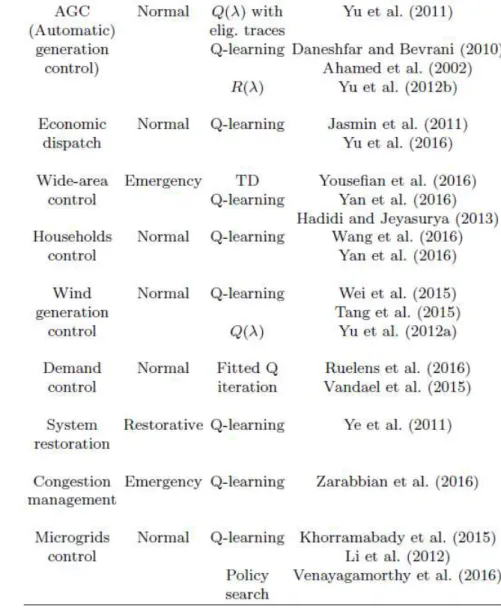Reinforcement learning, energy systems and deep
neural nets
Agent
Environment
state
reward
action
numerical value
The battery
controller
State: (i) the battery
level (ii)
Everything you know
about the market
Reward: The money
you make during the
market period.
The battery setting
for the next market
period.
+ the energy
market
Table taken from: “Reinforcement Learning for Electric Power System Decision and Control: Past Considerations and Perspectives”. M. Glavic, R. Fonteneau and D. Ernst. Proceedings of the 20thIFAC World Congress.
Learning:
Exploration/exploitation: Not always
take the action that is believed to be
optimal to allow exploration.
Generalization: Generalize the
experience gained in some states to
other states.
Learning
phase
Effect of the
resulting control
policy
First control law for stabilizing power systems every computed using reinforcement learning. More at: “Reinforcement Learning Versus Model Predictive Control: A Comparison on a Power System Problem”. D. Ernst, M. Glavic, F.Capitanescu, and L. Wehenkel. IEEE Transactions on Syestems, Man, An Cybernetics—PART B: Cybernetics, Vol. 39, No. 2, April 2009.
Reinforcement learning for trading in the intraday market
More: “Intra-day Bidding Strategies for Storage Devices Using Deep Reinforcement”. I. Boukas, D. Ernst, A. Papavasiliou, and B. Cornélusse. Proceedings of the 2018 15th International Conference on the European Energy Market (EEM).
